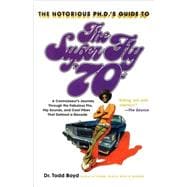
What is included with this book?
TODD BOYD is a critically acclaimed author and commentator who has appeared on CNN, NPR, Good Morning America, the CBS Evening News, NBC Nightly News, and other programs, and has written pieces for The New York Times and the Los Angeles Times. He is a professor at the USC School of Cinema-Television and lives in Los Angeles.
The New copy of this book will include any supplemental materials advertised. Please check the title of the book to determine if it should include any access cards, study guides, lab manuals, CDs, etc.
The Used, Rental and eBook copies of this book are not guaranteed to include any supplemental materials. Typically, only the book itself is included. This is true even if the title states it includes any access cards, study guides, lab manuals, CDs, etc.
Excerpted from Notorious Phd's Guide to the Super Fly '70s: A Connoisseur's Journey Through the Fabulous Flix, Hip Sounds, and Cool Vibes That Defined a Decade by Todd Boyd
All rights reserved by the original copyright owners. Excerpts are provided for display purposes only and may not be reproduced, reprinted or distributed without the written permission of the publisher.